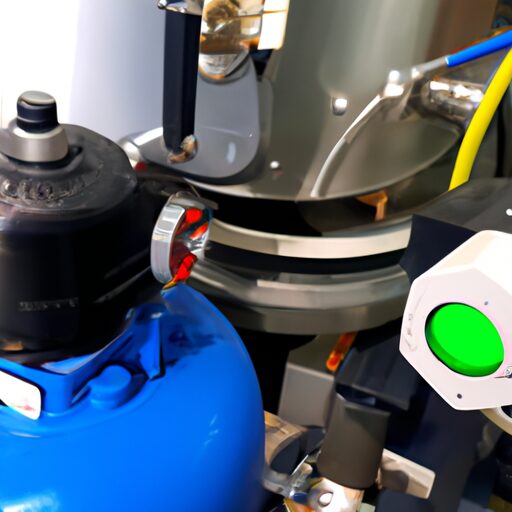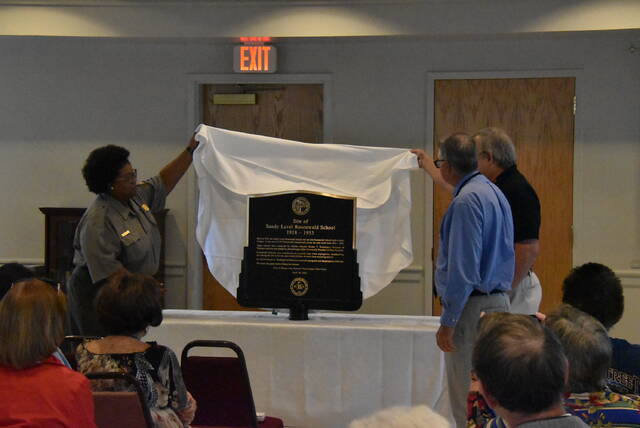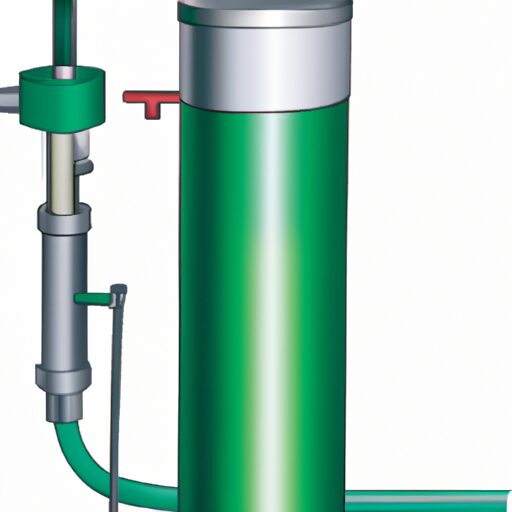How To Put Hydraulic Fluid In A Salon Chair
Hydraulic chairs play a crucial role in the functionality and comfort of salon equipment. However, over time, these chairs may experience issues related to hydraulic fluid levels. This article aims to provide a comprehensive guide on how to put hydraulic fluid in a salon chair in a technical, precise, and detailed manner.
To begin with, gathering the necessary tools and materials is essential for this task. Once equipped, locating the hydraulic fluid reservoir becomes the next step. Properly preparing the chair for fluid refilling ensures an efficient process. Adding the hydraulic fluid follows this preparation phase.
Additionally, bleeding any air from the system is important to maintain optimal performance. Subsequently, testing the chair’s functionality allows verification of successful fluid replenishment. Lastly, regular maintenance and care tips for salon chairs are provided to ensure long-term durability.
By following these steps diligently, salon owners or technicians can effectively address any hydraulic fluid-related concerns in their chairs while maintaining an engaging and well-functioning environment for their clientele.
Gather the Necessary Tools and Materials
The first step in the process involves collecting all of the required tools and materials for adding hydraulic fluid to a salon chair, ensuring a smooth and successful procedure. Proper chair maintenance is essential to ensure its longevity and optimal performance. To begin, it is important to gather the necessary tools such as a wrench or socket set, a funnel with a small tip, and absorbent rags or towels. Additionally, it is crucial to have the appropriate hydraulic fluid types on hand. Hydraulic fluids come in different viscosities and formulations, so it is imperative to consult the manufacturer’s guidelines or user manual for specific recommendations. Using the wrong type of hydraulic fluid can lead to malfunctions or damage to the chair’s mechanisms.
Once all the tools and materials are assembled, locating the hydraulic fluid reservoir becomes the next task. This reservoir is typically located near the base of the salon chair. It may be concealed by an access panel that needs removal before proceeding further. By following these initial steps diligently, one can ensure that they are well-prepared for adding hydraulic fluid to their salon chair.
Locate the Hydraulic Fluid Reservoir
To successfully service a salon chair, it is essential to first identify the specific location of the reservoir containing the hydraulic fluid. The hydraulic fluid reservoir is typically located underneath the seat of the chair. It is important to note that different salon chairs may have slightly different designs, so it is crucial to consult the manufacturer’s instructions or reference materials for precise information about locating the reservoir.
Before starting any maintenance work on the hydraulic system, it is recommended to check for leaks in the reservoir or any other components. This can be done by visually inspecting for any signs of fluid leakage such as puddles or stains around the base of the chair. If a leak is detected, appropriate measures should be taken to fix it before proceeding with refilling.
Once you have located and checked for leaks in the hydraulic fluid reservoir, it is imperative to ensure proper disposal of any old or contaminated fluid. Hydraulic fluids can potentially contain harmful chemicals and should not be disposed of in regular waste streams. Instead, follow local regulations and guidelines for disposing of hazardous materials safely.
With knowledge about locating the hydraulic fluid reservoir and ensuring its integrity, you can now proceed to prepare the chair for fluid refilling in order to restore its optimal functionality.
Prepare the Chair for Fluid Refilling
In order to restore the chair’s optimal functionality, one must undertake the essential task of preparing it for fluid refilling, ensuring a smooth and seamless process. Before adding hydraulic fluid to a salon chair, several steps need to be taken to ensure that the chair is ready for refilling. These steps include:
-
Clearing the area around the chair: Before beginning any maintenance work on the chair, it is important to clear the surrounding area of any obstacles or potential hazards. This will provide ample space for maneuvering and prevent any accidents.
-
Disconnecting power sources: Prior to working on the chair, it is crucial to disconnect all power sources, such as unplugging it from electrical outlets. This step ensures safety during the preparation process.
-
Checking for leaks: Inspect the hydraulic system thoroughly for any signs of leakage or damage. Look for visible oil stains or wet spots around the base of the chair and examine all connections and fittings for potential leaks.
-
Cleaning and securing components: Ensure that all components are clean and free from debris before proceeding with refilling. Additionally, tighten any loose fittings or connections to prevent further leakage.
By following these preparatory steps diligently, one can ensure a smooth transition into adding hydraulic fluid to their salon chair without encountering any avoidable complications or setbacks in maintaining its functionality at an optimal level.
Add the Hydraulic Fluid
One crucial step towards restoring optimal functionality and ensuring a seamless transition in maintaining the chair’s performance is to proceed with adding the necessary fluid. Before adding hydraulic fluid to a salon chair, it is important to understand the properties of hydraulic fluids and how they affect the performance of different types of salon chairs.
Hydraulic fluids are specially formulated substances that transmit power in hydraulic systems. They possess specific properties such as viscosity, corrosion resistance, thermal stability, and lubricity. These properties ensure smooth operation and prevent damage to the chair’s components.
Different types of salon chairs may require different types of hydraulic fluids based on their design and specifications. It is essential to consult the manufacturer’s guidelines or technical documentation for specific recommendations regarding the type and quantity of hydraulic fluid required.
When adding hydraulic fluid, it is crucial to follow precise steps outlined by the manufacturer to avoid overfilling or underfilling the system. This ensures optimal performance and prevents any potential damage caused by improper fluid levels.
To facilitate a smooth transition into bleeding air from the system, it is important to properly add hydraulic fluid according to manufacturer instructions.
Bleed the Air from the System
The process of bleeding air from the system ensures optimal performance and prevents potential damage. When adding hydraulic fluid to a salon chair, it is important to remove any trapped air in order to maintain the chair’s functionality. Air bubbles can cause the hydraulic system to operate improperly or even fail completely. To bleed the air from the system, there are several techniques that can be employed.
One common technique involves locating the bleeder valve on the hydraulic cylinder and slowly opening it while applying pressure to activate the pump. This allows any trapped air to escape through the valve. Another method is to repeatedly cycle the chair up and down, which helps move any air bubbles towards the bleeder valve, where they can be released.
Troubleshooting common air lock issues may involve checking for loose connections or damaged seals that could be causing leaks in the system. Additionally, ensuring that all components are properly lubricated can help prevent future problems with air pockets.
By following these air bleeding techniques and troubleshooting common issues, you can effectively eliminate any trapped air in your salon chair’s hydraulic system and ensure its optimal functionality. Next, we will test the chair’s functionality by performing a series of movements and adjustments.
Test the Chair’s Functionality
To ensure the hydraulic fluid is properly distributed throughout the salon chair, it is important to bleed any air from the system. This process eliminates air bubbles that could affect the chair’s functionality. Once this step has been completed, it is necessary to test the chair’s functionality to ensure its stability and weight capacity.
When testing the chair’s stability, check for any wobbling or uneven movement. This can be done by gently rocking the chair back and forth and side to side. If there are any signs of instability, further adjustments may be required.
Next, it is crucial to check the chair’s weight capacity. This involves gradually applying pressure to different parts of the chair while monitoring for any signs of strain or failure. Pay close attention to areas such as the seat and armrests, as these are common stress points.
In summary, after bleeding the air from the system, it is essential to test the salon chair’s stability and weight capacity thoroughly. By conducting these tests, you can ensure that your salon chairs are functioning optimally and provide a safe experience for clients.
Moving on from this section about testing functionality, we will now discuss regular maintenance and care tips for salon chairs
Regular Maintenance and Care Tips for Salon Chairs
Regular maintenance and care are essential for ensuring the longevity and proper functioning of salon chairs. Professional chair maintenance offers several benefits. Firstly, it helps to identify and address potential issues before they become major problems, saving time and money in the long run. Regular inspections can detect wear and tear on hydraulic components, allowing for timely repairs or replacements. Additionally, professional maintenance ensures that the hydraulic fluid levels are checked regularly to prevent leaks or inadequate lubrication.
Common problems with salon chairs often include squeaking noises, difficulty adjusting the height or reclining position, and uneven or unstable seating. These issues can be fixed by following certain steps. Lubricating moving parts with appropriate oils or greases can eliminate squeaks and ensure smooth operation. Adjusting tension controls can resolve difficulties in adjusting the chair’s height or reclining position. If the seating is uneven or unstable, inspecting the base for loose screws or bolts may help fix the problem.
In conclusion, regular maintenance performed by professionals is crucial for keeping salon chairs in optimal condition. It allows for early detection of problems with hydraulic components and ensures proper lubrication of moving parts. By addressing common issues promptly, salon owners can maximize the lifespan of their chairs while providing a comfortable experience for their clients.
Frequently Asked Questions
How often should the hydraulic fluid in a salon chair be replaced?
The frequency of hydraulic fluid replacement in a salon chair is crucial for maintaining optimal performance. Regular maintenance ensures that the chair functions smoothly and prevents potential damage caused by contaminated or degraded hydraulic fluid.
Can any type of hydraulic fluid be used in a salon chair?
Different types of hydraulic fluids can be used in a salon chair, but it is important to use the type recommended by the manufacturer. Proper disposal of hydraulic fluids should follow local regulations to prevent environmental contamination.
What should I do if I accidentally spill hydraulic fluid on the chair upholstery?
To clean hydraulic fluid stains from chair upholstery, first blot the spill with a clean cloth to absorb excess fluid. Then, mix a solution of dish soap and warm water, and gently scrub the stained area using a soft brush. Rinse thoroughly and allow to air dry. To prevent spills, ensure proper maintenance of hydraulic components and use caution when handling fluids.
Is it necessary to wear protective gloves when handling hydraulic fluid?
Safety precautions for handling hydraulic fluids include wearing protective gloves to prevent skin contact. Proper disposal of hydraulic fluid waste is important to avoid environmental contamination.
How do I know if the hydraulic fluid level in my salon chair is low?
To check the hydraulic fluid level in a salon chair, observe for signs of low fluid such as slow or erratic movement, unusual noises, or leakage. Consult the chair’s manual for specific instructions on checking and adding hydraulic fluid.
Conclusion
In conclusion, the process of putting hydraulic fluid in a salon chair requires careful attention to detail and precise execution. By following the steps outlined in this article, salon owners can ensure the smooth functioning of their chairs and provide a comfortable experience for their clients. Just as a well-oiled machine operates seamlessly, maintaining hydraulic fluid levels in salon chairs is crucial for optimal performance. Neglecting this maintenance task may result in discomfort or even malfunctioning of the chair, hindering the overall salon experience.







